Fast-growing intercrops vegetables are an agricultural practice where multiple crops are grown simultaneously in a field, with smaller plants planted between the main crop.
This method can be easily applied to home gardens, allowing growers to maximize space and increase yields. Intercrops can also act as cover crops, improving water retention, providing shade, and reducing wind erosion.
They can balance soil nutrients, such as legumes fixing nitrogen. However, compatibility is crucial when choosing companion plants.
Also Read: Fast Growing Vegetables in Pots
Fast-Growing Intercrops Vegetables
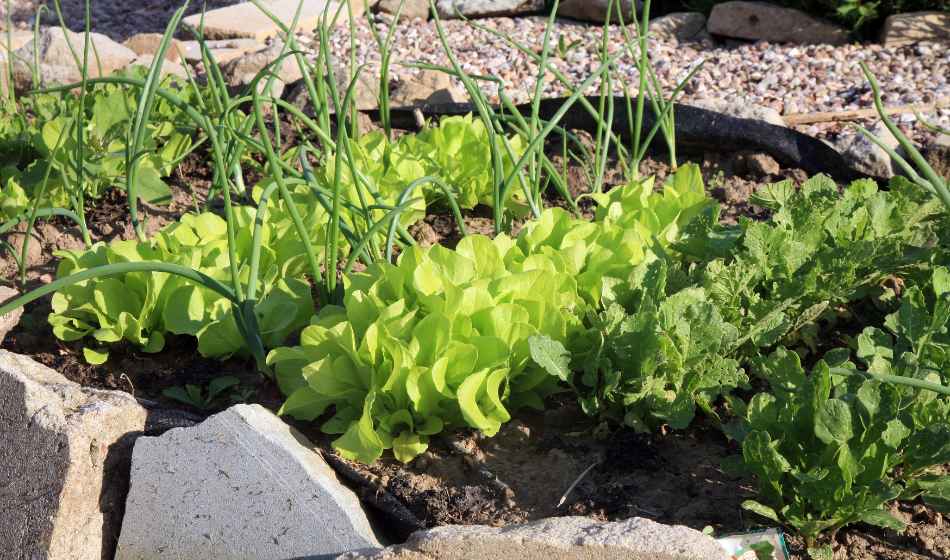
To make the most of even the smallest spaces, consider combining intercropping with other methods, such as vertical vegetable growth and succession planting.
Cultivating these intercrops, which are known for their rapid growth, is not only simple and trouble-free but will also help your vegetable plot use less effort.
Benefits of Intercropping Vegetables
Growing two or more types of vegetables in the same area simultaneously is called intercropping. So, fast-growing intercrops vegetables are the need of time to cover spaces, and to get the utmost results. It is very good for both your yard and your harvest. Let’s look more closely at the good things this method does:
1. Maximized Yield and Resource Efficiency:
• Space Optimization: Intercropping lets you use every part of your plant bed, which saves space. Vegetables that grow quickly and stay low, like lettuce, can do well under crops that grow higher and take longer to mature, like tomatoes. This lets you get the most harvest from a small area.
• Nutrient Sharing: Some mixtures of plants work well together, creating a mutual connection. Legumes that fix nitrogen, like beans and peas, add nitrogen to the soil, which helps nearby crops that need a lot of nitrogen, like corn and peppers. As a result, less fertilizer from outside sources is needed.
Also Read: Fastest Growing Vegetables: From Seed to Table in No Time
2. Better control of pests and diseases:
• Habitat diversity: Intercropping changes the perfect climate for pests and diseases like monocultures (single-crop plantings). The wider range of plants makes the environment less clear for pests, which makes it harder for them to build big numbers.
• Bring in good bugs: Herbs with strong scents, like basil and mint, keep bad bugs away while bringing good bugs that eat bugs, like ladybugs and hoverflies. These bugs help keep pest numbers under control naturally.
3. Better fertility and health of the soil:
• Living Mulch: Planting low-growing plants beside each other stops weeds from growing and keeps the soil from washing away. This organic cover keeps the soil wet, so you don’t have to water it as often.
• Nutrient Cycling: Various plants with different root structures support healthy soil flora. Plants with deeper roots get nutrients from the ground below, while plants with shallower roots get nutrients from the soil above. This variety makes it easier for nutrients to move around in the soil.
4. A longer harvest window and nonstop production:
• Planting in a row: When you intercrop, you can plant veggies that mature at different rates next to each other. You can pick the crop that grows faster while the one that grows slower keeps growing, which extends your gathering window.
• Filling in the Gaps: Greens that bolt more slowly, like kale, can be planted between veggies that grow quickly, like radishes. This ensures you always have something ready to pick, making your garden more productive all season.
Note: Before you start intercropping, do some research to figure out which plants will grow well together. But the benefits are great: Your veggie garden will be stronger, more productive, and last longer.
Also Read; How to Start a Kitchen Garden: A Comprehensive Guide
Right Combinations for Intercropping Vegetables
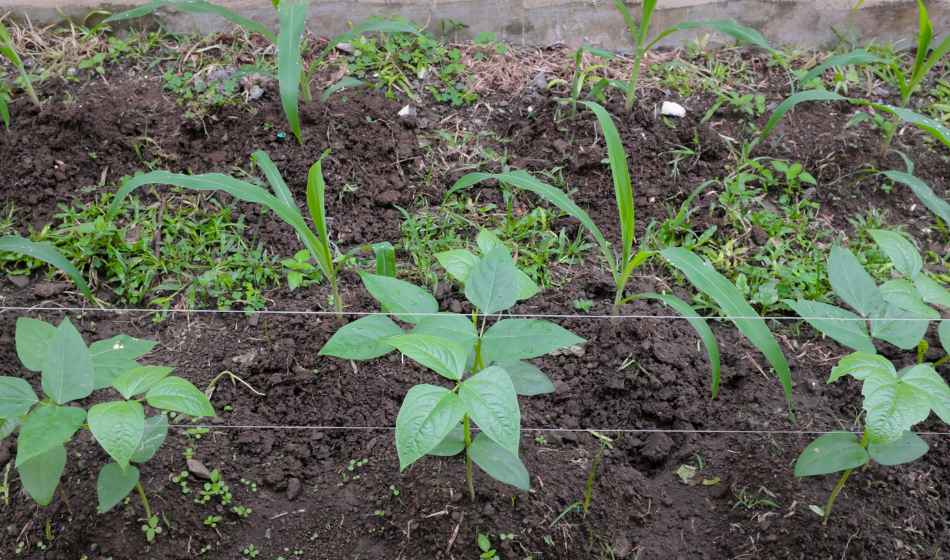
We saw that choosing plants that can grow together is very important for intercropping. Let’s talk more about the most important things you need to think about:
1. How it grows (height and root depth):
• Use of Vertical Space: Mix tall and short plants in your yard to make the most of your vertical space. For instance, plant pole beans that can climb cornstalks. This way, the beans can use the space above while the corn fills the space below. In the same way, plant short, leafy greens like spinach or lettuce between higher, slower-growing plants like peppers or broccoli.
• Root System Synergy: When picking plants to grow together, consider how deep the roots go. Plants with thin roots, like cabbage or radishes, can grow next to veggies with deep roots, like carrots or turnips. This ensures that both plants can get the water and nutrients they need without competing for them.
2. Needs for Light:
• Sun-loving and Shade-tolerant Companions: Vegetables like sun, like peppers or tomatoes, should be paired with greens that can handle shade, like spinach or arugula. The greens that grow lower get shade from the bigger plants, making an environment good for both. But don’t put plants that cast too much shade next to plants that need full sun all day.
• Successional Planting: Plan when to put things so that they get enough light. For example, plant salad greens that grow quickly in early spring before you plant tomatoes or cucumbers, which grow larger and take longer to grow. When the bigger plants need full sun, the greens will already be fully grown and ready to be picked.
Also Read: Revolutionize Your Garden with Solar-Powered Tools
3. What it needs in terms of nutrients:
• Heavy Feeders and Nitrogen Fixers: Heavy feeders and nitrogen fixers Tomatoes, peppers, and corn are heavy eaters that need many nutrients to grow well. Plant them next to legumes that fix nitrogen, like beans or peas. These legumes take nitrogen from the air and change it into a form that plants can use. This makes the soil better and helps plants nearby.
Nutrient Sharing and Allelopathy: Some plants, called allelopathy, release chemicals that can stop other plants from growing. Before intercropping, learn more about these relationships. For instance, you shouldn’t put fennel near anything else because it can stop many veggies from growing.
4. Time to Maturity:
• Harvests in Order: Plant vegetables that grow quickly, like radishes or spinach, next to veggies that grow slowly, like Brussels sprouts or cauliflower. This lets you pick the ready veggies sooner rather than later when they might be competing for room or light with the ones growing more slowly.
• Catch Cropping: Plant plants that grow quickly in the spaces between crops that take a long time to mature. To give you an idea put cabbage or spinach between tomato plants early in the season. When the tomatoes need more room, the spinach or lettuce will be ready to be picked.
Note: By carefully considering these things and studying how certain plants interact with each other, you can make the process of growing intercrops vegetables easy. Intercropping mixtures that work well together yield the best harvest and support a healthy garden environment.
Also Read: Unearthing Expert Tips to Start a Garden From Scratch
Examples of Successful Intercropping Combinations

Going beyond the basics, here’s a closer look at some examples of great intercropping combinations like:
a). Tall and Short Companions:
- Corn: Corn is a flexible plant that can shade many shorter plants, such as lettuce, spinach, and other garden greens. Do well in the shady sunlight under the corn.
- Bush beans: Use the corn stalks to help your plants grow.
- Squash and melons: Enjoy the partial shade, especially in hot places, and how their spreading plants keep weeds from growing around the corn base.
b). Living mulch:
- Vining vegetables: Use vegetables that grow low and spread out as live mulch. Here are some combos that work well:
- Cucumbers or squash: When planting cucumbers or squash, mix them with herbs like nasturtiums, which keep bugs and other pests away, or with greens that grow quickly, like arugula.
- Watermelons: Watermelons do best with growing herbs like oregano or thyme, which add scent, keep pests away, and keep weeds in check.
c). Powerhouses for fixing nitrogen:
- Beans and peas (legumes): These nitrogen-fixing specialists make the soil better for nearby plants, which is good for them. Take a look at these pairs:
- Peas: Plant peas next to root veggies like beets or carrots. The extra nitrogen will help them grow without taking up too much room because their roots are at different levels.
- Bush beans: Plant them next to potatoes, peppers, or eggplants. The beans will fix nitrogen, and the bigger plants will give the beans some shade during the day.
d). Partners in Pest Control:
- Herbs with strong smells: These natural bug repellents can be put in a way that helps crops nearby. To give you some examples:
- Rosemary and thyme: Plant these herbs near broccoli and cauliflower to avoid cabbage bugs.
- Mint: Aphids won’t attack tomatoes and other veggies if you use mint. But remember that mint can spread quickly, so you might want to put it in a pot.
- Marigolds: These happy flowers make the garden look nicer and keep pests like worms and whiteflies away. Plant them all over your food yard.
f). Planting one after the other:
- Crops that grow quickly: Plant veggies that mature quickly in the spaces between vegetables that grow more slowly. Some examples are
- Radishes: You can pick these fast-growing veggies between slower-growing plants like beets or carrots before they crowd the slower-growing plants.
- Salad greens: Plant a mix of lettuces, arugula, and spinach between veggies that take longer to grow, like peppers or eggplant. Take advantage of a steady yield all season long.
Advice / Suggestion
Keep in mind that this is not a complete list of fast-growing intercrops vegetables, and that study is very important! Check out partner planting plans and try out different combos based on the veggies you are growing and their situations.
With intercropping, you can create a veggie garden that is full of life and thrives on natural unity and variety.
Also Read: How to Make Money with Gardening
Easy Intercropping Techniques
This year, the author intends to boost their gardening efforts by growing intercrops vegetables instead of building extra beds. They recommend intercropping to make the most of restricted space, often known as double cropping.
They use easy-care, quickly-growing crops like radishes and lettuce, but they advise considering plant interactions to optimize the advantages of intercropping.
1. Slow Crop, Fast Crop
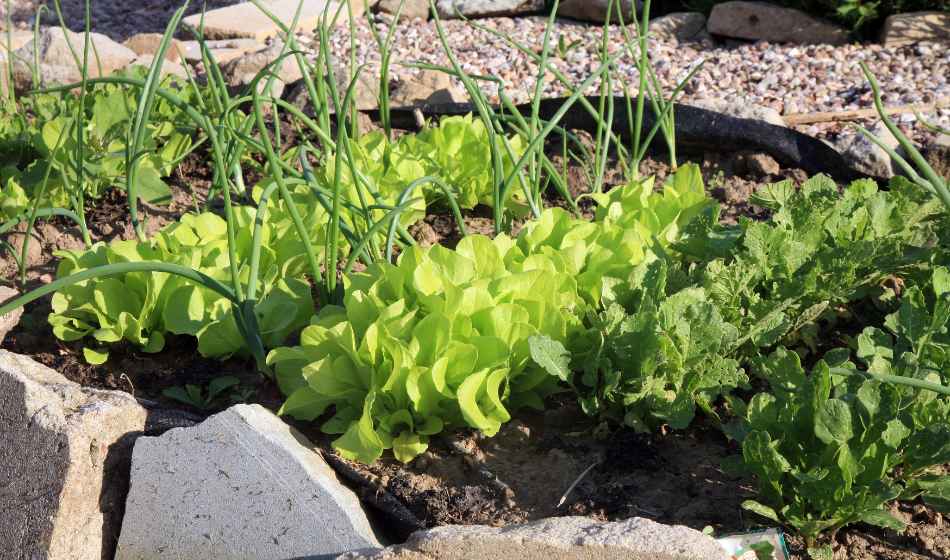
Crops that grow more slowly may be mixed with faster-growing ones to maximize available area. More yield may be achieved by planting at somewhat wider spacings and using smaller, faster-growing crops to fill in the gaps.
For example, planting lettuce between baby leeks or radishes or arugula between bigger brassicas like cauliflower and Brussels sprouts might help shade weeds and be picked later. Alternatively, planting quick-germinating crops such as eager radishes as “marker” veggies may assist in determining when parsnips are to be found.
2. Relay Cropping
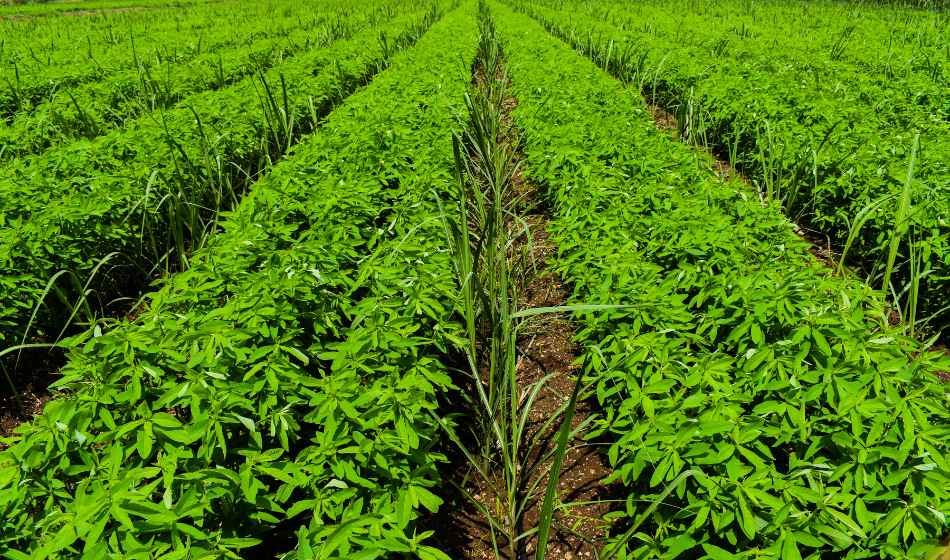
Planting around July is known as “relay cropping,” it’s particularly common in regions with shorter growing seasons. A replacement crop is sown a few weeks before the first crop is harvested, enabling the almost-ready crop to sprout rapidly in warm soil.
The second sowings may move into the empty area after harvesting the first crop. For instance, it’s effective to plant carrots and beets between onions and garlic.
3. Intercropping
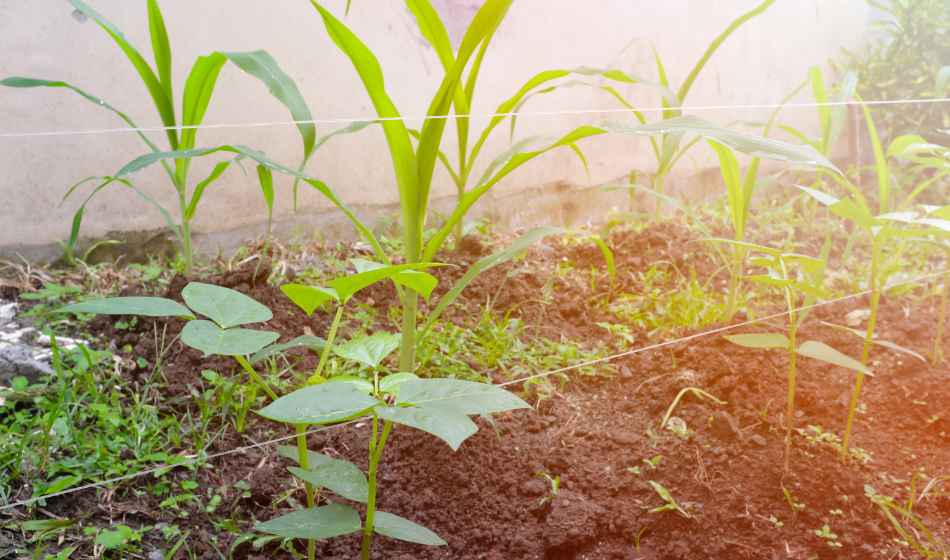
One way to grow plants in the same place but with differing growth patterns is to undercrop them. Sweetcorn and squashes are a common pairing because the former gives shade, and the latter aids with weed control.
Squashes between their feet may also be used to cultivate climbing beans and dwarf French beans. Vegetables that need shade, particularly in warmer climates, might benefit from tall plantings.
Compact cool-season crops like salad leaves, winter radish, and spinach may be planted beneath lanky sun-loving plants like tomatoes to keep the soil wet for these heat-averse plants.
Also Read: How to Grow Fruit Trees in Containers
How to get better at intercropping:

Here is some additional information to quench your thirst. Follow the tips to grow your fast-growing intercrops vegetables garden like a professional gardener.
• Accept succession planting: Don’t leave an empty room! Plant crops that grow quickly, like radishes or spinach, one after the other, in between veggies that grow more slowly. This lets you get the most out of your harvesting time all season.
• Rotate Your Crops: Intercropping is a great way to make your garden more interesting, but don’t forget to change your crops yearly. This helps keep certain plant groups’ soil-borne diseases and nitrogen loss at bay.
• Attract Pollinators: In your veggie bed, plant flowering herbs or partner flowers like marigolds and nasturtiums to attract pollinators. Bees and butterflies are drawn to these flowers, which are important for the growth of many plants’ fruits and seeds.
• Consider Vertical Gardening: To use your area better, look into vertical planting methods. Beans, peas, and other climbing veggies can be trained to grow up trellises or walls, making room below for other crops.
• Mulch Is Important: Putting organic mulch around your intercropped plants will help keep the soil wet, keep bugs away, and keep it at the right temperature. This will create a better climate for all of your veggies.
• Be Mindful of Watering Needs: Pay attention to how much water each plant needs. Different plants need different amounts of water. In your intercropping plan, combine plants that need about the same amount of water. For example, herbs that can survive in dry conditions, like rosemary, can go well with veggies that don’t need much water, like peppers.
• Keep Records and Observe: Write down what worked and didn’t when you intercrop. Which combinations did well, and which ones did not? This knowledge will help you decide what to plant next and improve your intercropping methods.
Note: Using these extra tips, you can turn your food garden into a healthy, self-sufficient environment. Intercropping is a fun and useful gardening technique that can help you be a more resourceful and productive worker while creating a healthy and varied garden environment.
Also Read: Easiest Crops To Grow For Profit
Conclusion
Make the most of your landscape by transforming bare spots into abundant crops!, this is called growing intercrops vegetables or intercropping. Proliferating vegetables can be interplanted with slower-growing ones for optimal results.
Leafy greens such as lettuce and arugula, as well as tiny beets and radishes, grow swiftly and provide a tasty feast while your major crops develop. They even function as living mulch, keeping the soil cool and inhibiting the growth of weeds.
Furthermore, leafy greens can continue to grow if they are harvested by cutting rather than uprooting. Therefore, fill up those empty spaces in your garden with quick-growing intercrops to get the benefits of a continuous harvest all season long!
Recent Posts
Here is reply of high-demand removable wallpapers. The wallpaper industry has changed a lot in recent times, with the launch of removable wallpaper being seen as a blessing for homeowners, renters,...
Brown is an often neglected color when considering interior design but brown decor living room ideas could make your house feel warm, sophisticated, and timeless. More adaptable than any other...
